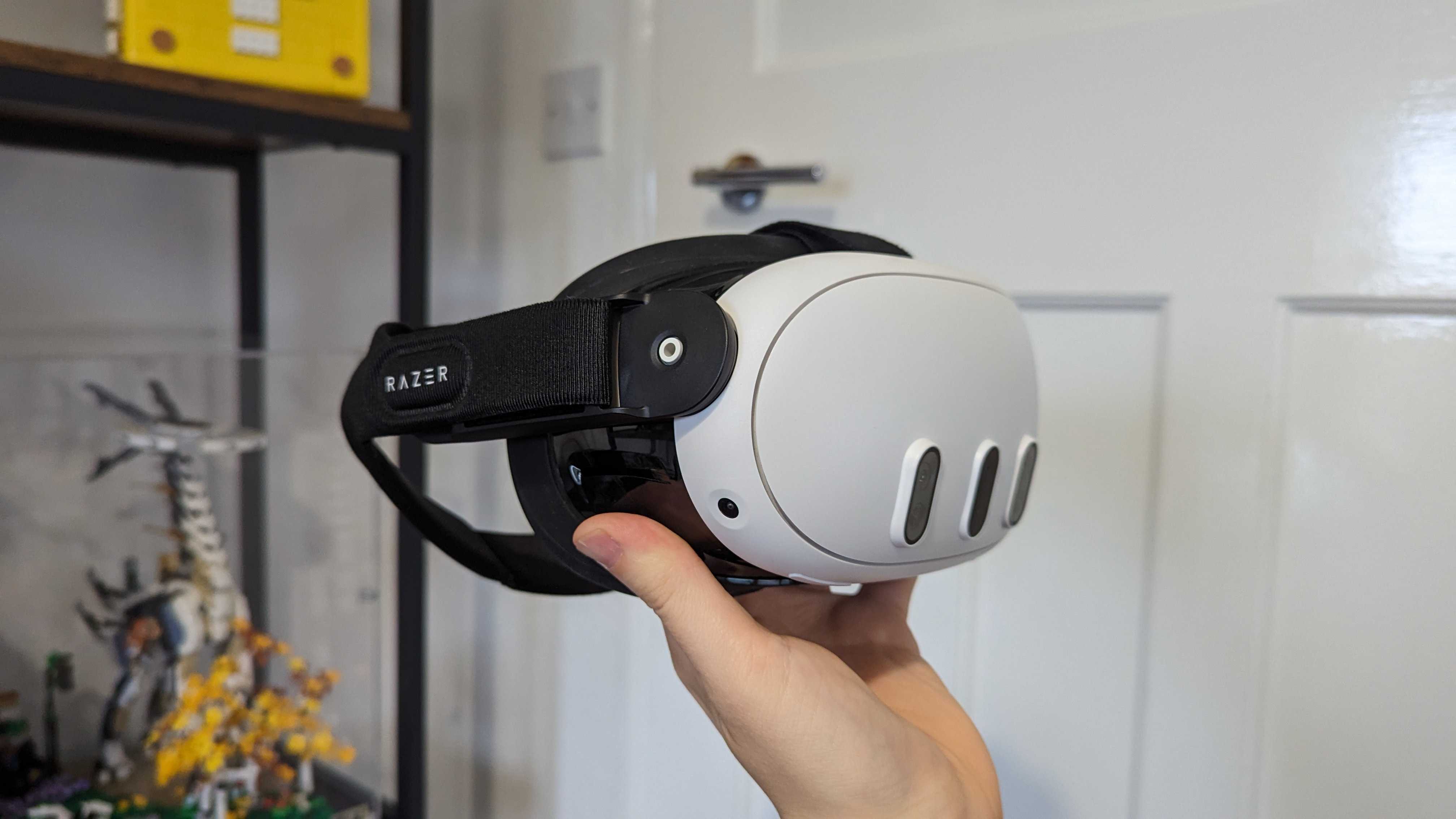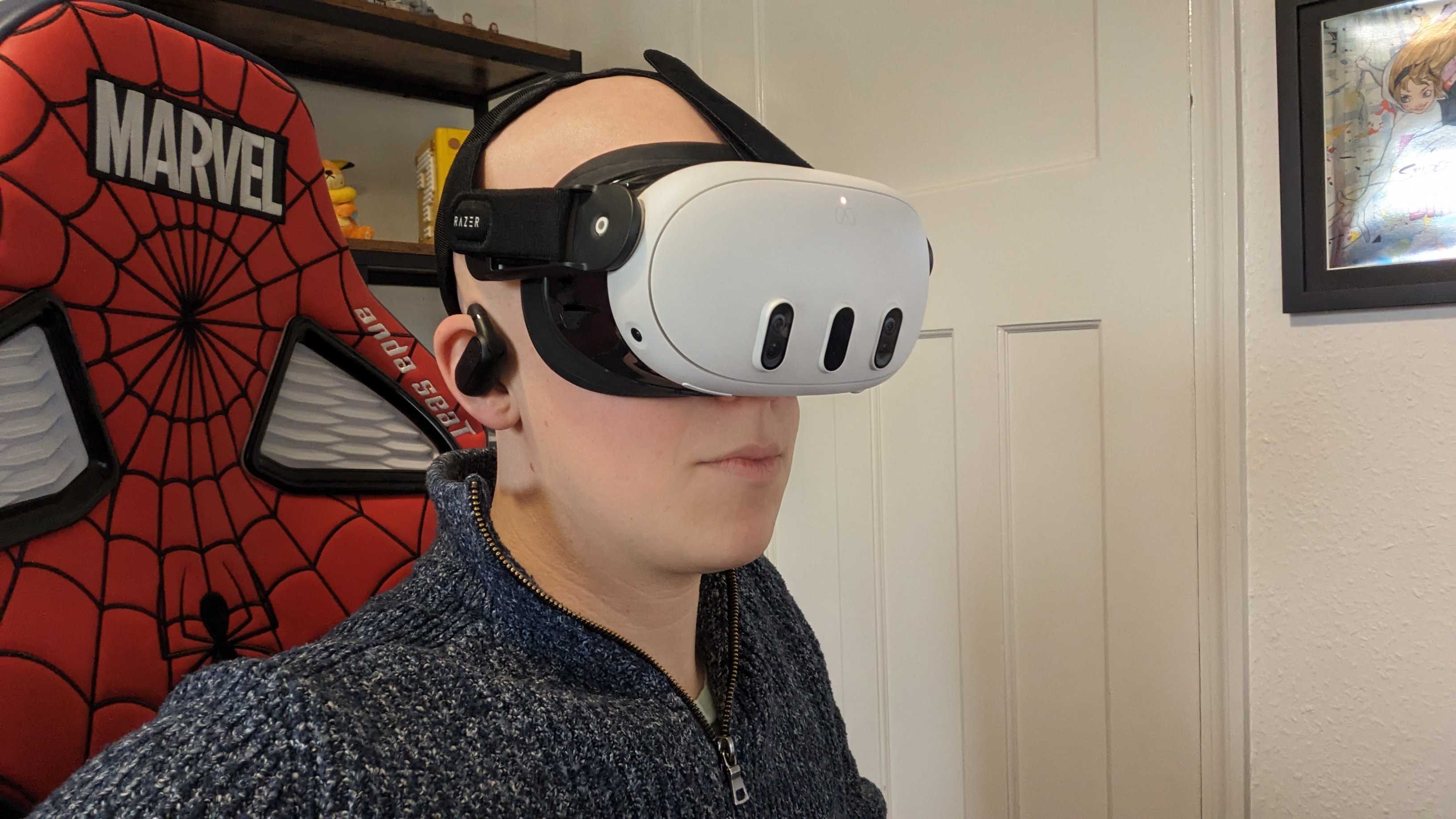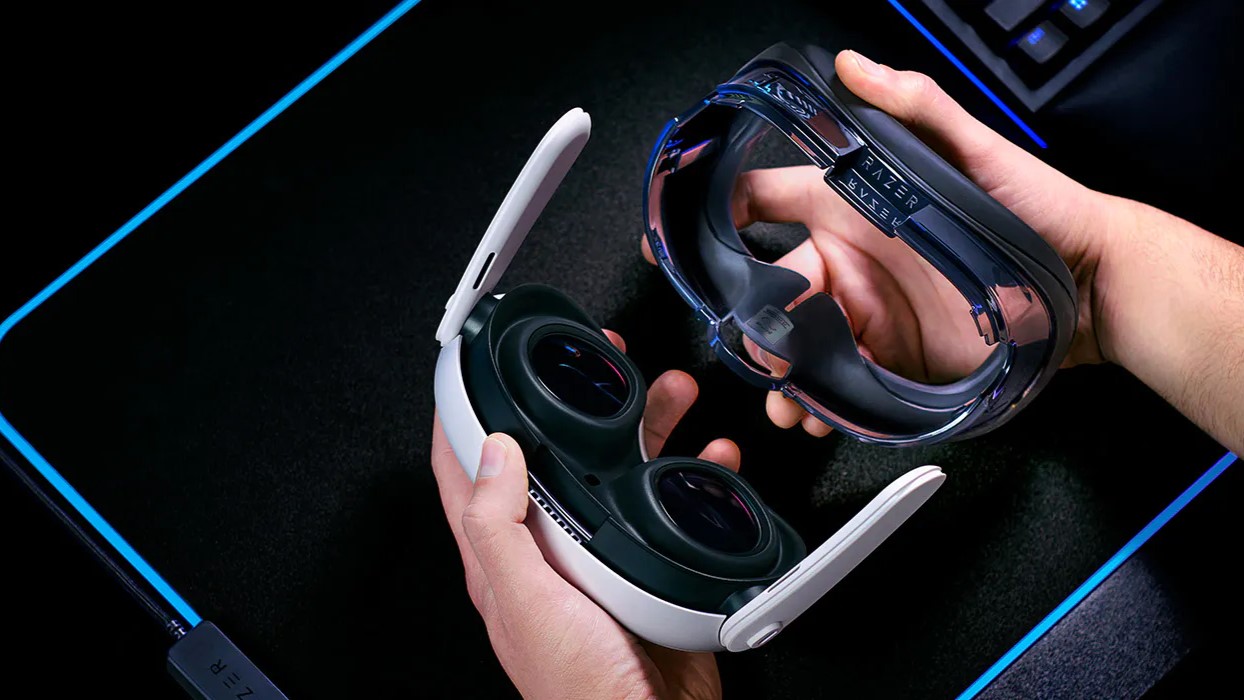I love Razer's Meta Quest 3 accessories, but I hate how damn expensive they are
Without RGB lights are these even real gaming accessories?

The Meta Quest 3 is a very impressive VR headset – in fact, it’s one of the world’s best VR headsets – but it could be better. That’s where accessories come in, like Razer's recently released head strap and facial interface, which I’ve been testing.
While I feel they both improve the Meta Quest 3, at a combined cost of $139.98 / £139.98 it’s a little tough to recommend them – especially since the Quest 3 already sets you back $499.99 / £479.99 / AU$799.99.
The ‘Adjustable Head Strap System Authorized for Meta Quest 3’ – yes, that is its official name – is an adjustable nylon head strap that Razer says is ergonomically designed for all head shapes. It has side and top padded straps, which can be extended or shortened to suit your needs, with a circular cradle shape that hugs the back of your head.
Compared to the basic elastic strap you get free with the Quest 3, this Razer accessory is a lot more comfortable, and the headset does feel like it’s more securely attached to my face. The downside is, of course, that this upgrade costs $69.99 / £69.99, which feels a little steep when you look at popular third-party alternatives like Kiwi’s $59.99 / £59.99 head strap.
The Kiwi Quest 3 add-on not only boasts improved comfort like the Razer version but also comes with a battery pack to increase how long the Meta VR headset can last between charges. The only thing going for the Razer strap is it’s a lot prettier, in my opinion (though it does lack the brand’s iconic RGB lighting if you were hoping for that).

The facial interface follows the same unfortunate trend.
It’s a hypoallergenic silicone-clad cushion that replaces the basic fabric one you get by default. This means it’s a lot easier to clean than the regular facial interface, making it a perfect add-on for those of you who love VR fitness. It also features a light-blocking design with a little nose flap, creating more of a seal around your eyes to increase your immersion by blocking your view of the real world.
Sign up for breaking news, reviews, opinion, top tech deals, and more.
The light blocker is a genuine improvement, as is the cushion filling Razor has opted for– it’s surprisingly soft yet effective – but one issue I’ve found is that this $69.99 / £69.99 facial interface is not adjustable like Meta’s own brand at $39.99 / £39.99. This means that glasses wearers can’t extend the headset away from the face, so you either have to wear contacts or miss out on Razer’s design.
I think upgrading to a silicone facial interface is a must for Quest 3 users, given the hygiene improvements it provides. The Razer option is better than the Meta one, but it’s not $30 / £30 better, in my opinion. If you have the budget to splash out and use your Quest 3 a lot it’s worth going for the Razer accessory – that is, unless you need glasses, then Meta’s official design is your best bet.

If you’re not desperate to upgrade your Quest 3, I’d recommend keeping an eye out for these Razer accessories when we head into deals events like Prime Day and Black Friday later in the year.
I think they're superb, but, as I’ve said already, I wouldn’t pay $139.98 / £139.98 for them. If they were 25% off I’d consider it, and at half the price they’d be a definite must-buy. Unfortunately, at their current price, they’re not significantly better than the alternatives I’ve highlighted to justify that added cost, unless you’re a Razer diehard who adores its approach to design.
You might also like

Hamish is a Senior Staff Writer for TechRadar and you’ll see his name appearing on articles across nearly every topic on the site from smart home deals to speaker reviews to graphics card news and everything in between. He uses his broad range of knowledge to help explain the latest gadgets and if they’re a must-buy or a fad fueled by hype. Though his specialty is writing about everything going on in the world of virtual reality and augmented reality.